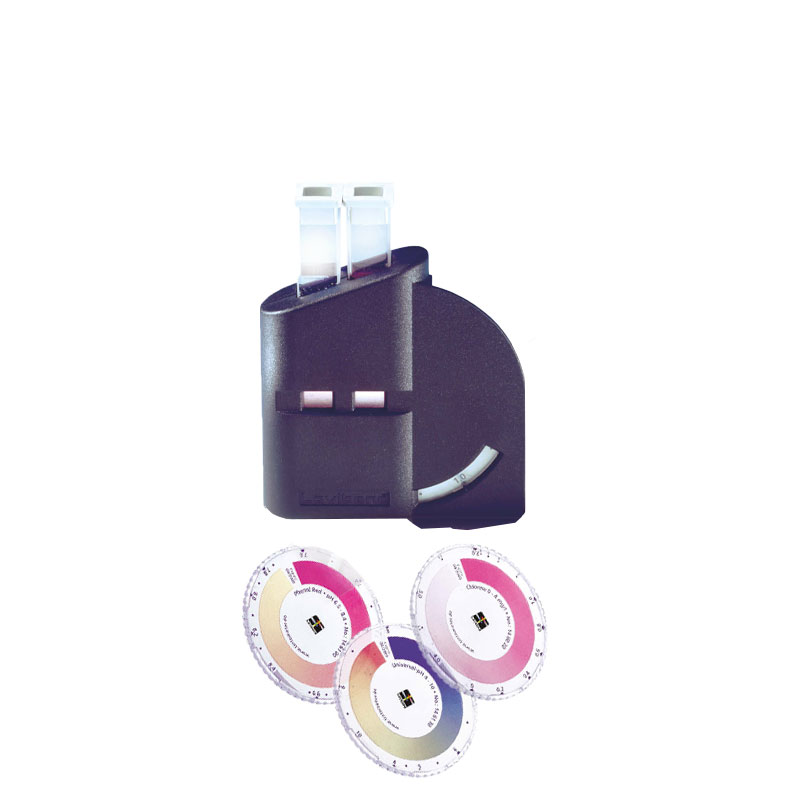Lovibond CHECKIT® Comparator 2 in 1 Chlorine DPD/pH
Pool Version
Comparation with colour discs
- Supplied field-ready in a carrying case with reagents and accessories for 30 tests
- Wide range of parameters for a variety of applications
- Color discs have a continuous color gradient making it possible to achieve a direct color match – no need to extrapolate the result between two color standards
- Step-By-Step Instructions
Multi-lingual instructions provide an illustrated step-by-step explanation of how to conduct the test – ensuring that even “non-chemists” can achieve reliable and accurate measurements quickly. - Wide Variety of Parameters
Many parameters have multiple testing ranges and methods available. Additional testing parameters can be added by purchasing additional discs and reagents – utilize the same comparator housing for all of your test. - One Piece Comparator Housing
The rugged design of the one-piece comparator housing has no “moving pieces” that can become lost or broken. Simply slip the color disc into the housing until it clicks into place and you’re ready to test. Test results are easily viewed in the results window. - Easy to View Results
The Diffuser Panel on the backside of the CHECKIT® Comparator housing helps to disperse light evenly among the sample and the blank tube. This makes it easier to achieve an accurate color match and helps the user visually compensate for turbidity in the sample. - Continuous Color Gradient
Color discs have a continuous color gradient making it possible to achieve a direct color match – no need to extrapolate the result between two color standards.
Water Balance in private pools and spas is the focus of this test kit for controlling the most important parameters of water quality. These include above all disinfectants based on chlorine (free, bound and total chlorine) and the pH value. Cyanuric acid, as a carrier substance of organic or stabilised chlorine, is important for the water balance and binds part of the chlorine content measured by DPD 1 at higher concentrations. High calcium hardness can cause turbidity. If the value is too low, the water becomes aggressive and damage to the building fabric is the result. Alkalinity-M describes the ability of the water to keep the pH value stable when acid or lye is added.
Can be used to test








